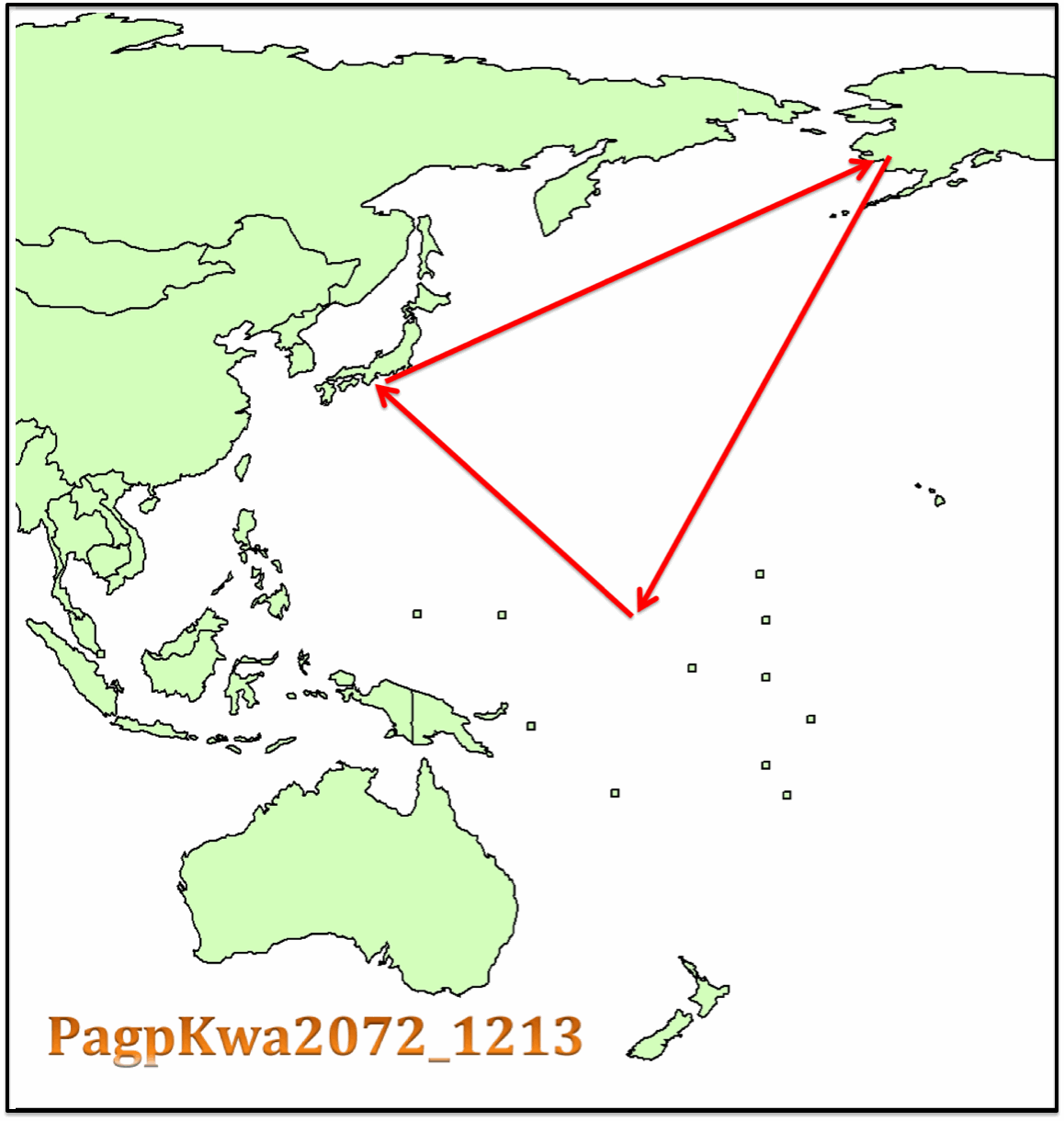Pluvialis fulva (Pagp, Pacific Golden Plover)
Project Name: Tracking Migrations of Pacific Golden Plovers at Kwajalein Atoll
Correspondent researcher: Wally Johnson at owjohnson2105@aol.com or geowader@waderstudygroup.org
Researchers: Johnson, O.W., Porter, R.R., Fielding, L., Weber, M.F., Gold, R.S., Goodwill, R.H., Johnson, P.M., Bruner, A.E., Brusseau, P.A., Brusseau, N.H., Hurwitz, K.
Bibliographic citation: Johnson, O.W., 2015. Tracking Pacific Golden-Plovers Pluvialis fulva: transoceanic migrations between non-breeding grounds in Kwajalein, Japan and Hawaii and breeding grounds in Alaska and Chukotka. Wader Study122(1): 4–11.

PagpKwa2072_12: the Typical Migration:
28mar12 deployed Kwajalein Atoll, N8.7xE167.7
18apr12 left Kwajalein, 21 days later
21apr12 arrived Japan, near N35.7xE140.9
11may12 left Japan, stayed 19 days
14may12 arrived Alaska,
incubation signals 21 to 28 days
19aug12 left Alaska, stayed 97 days
flight 6.7d, 6000km, MMS38km/h, headwinds
26aug12 arrived Kwajalein
21mar13, geolocator recovered, 207 days later

PagpKwa14597: Migration Variant:
This Kwajalein migration cycle changes to include a short Chukotka stop of 1 to 4 days northbound, and a diversion at the end of the southbound migration at Enewetak Atoll of duration 17days.
Flight weather southbound does not explain this diversion. Is it a navigation error? Why return to Kwajalein? Why not stay at Enewetak?
Route variability in Pluvialis fulva of Kwajalein Atoll:
Northbound routes are westerly, southbound routes are easterly. The circular migration takes advantage of favorable prevailing winds. The long oceanic flights have no indications of stops en route.

